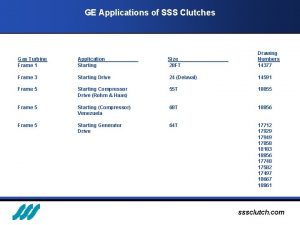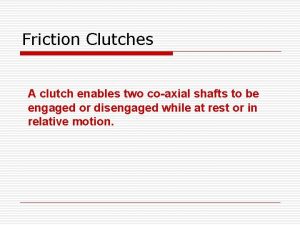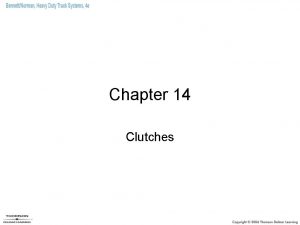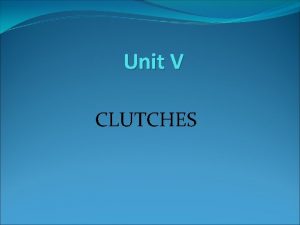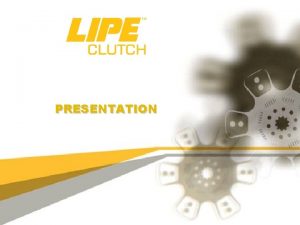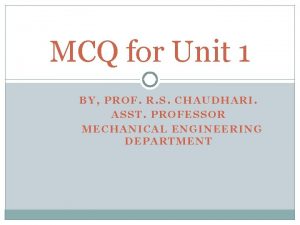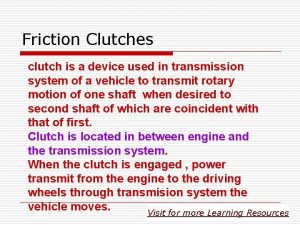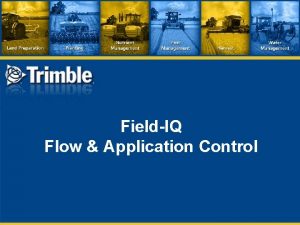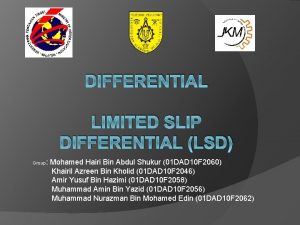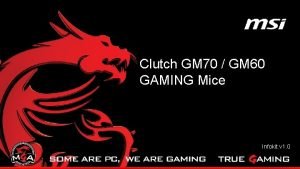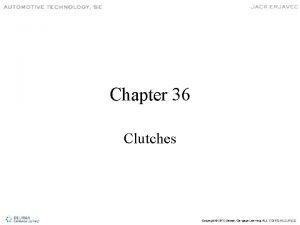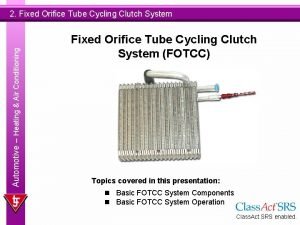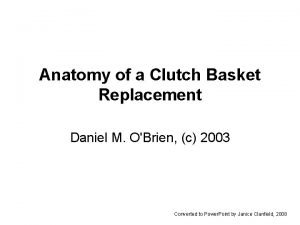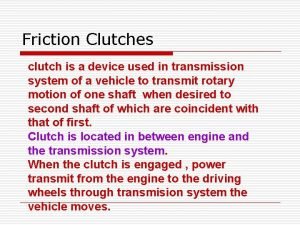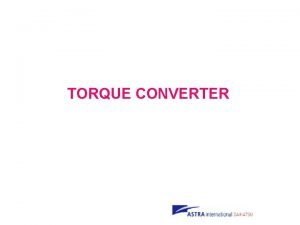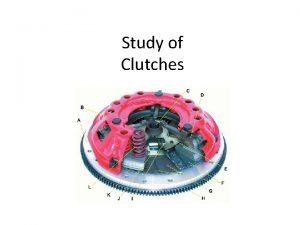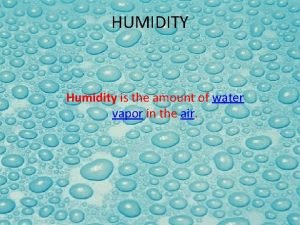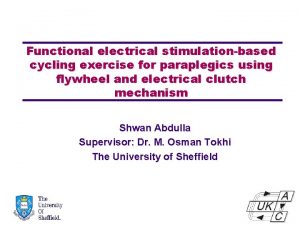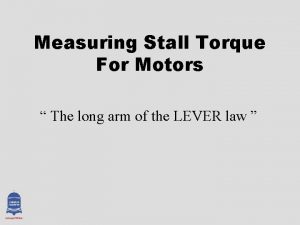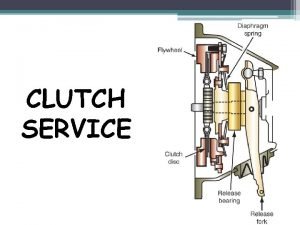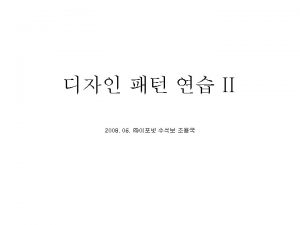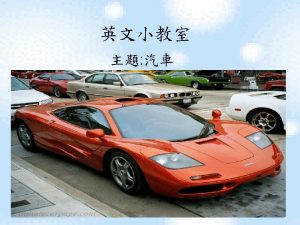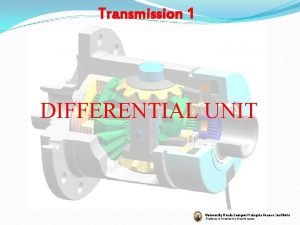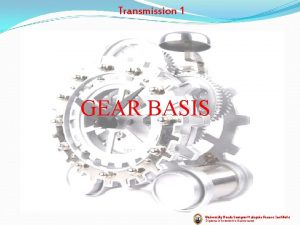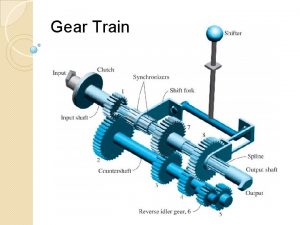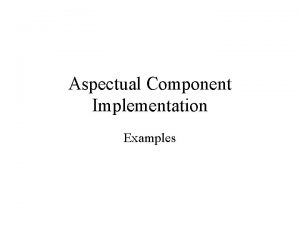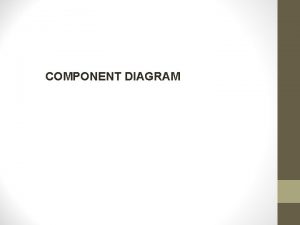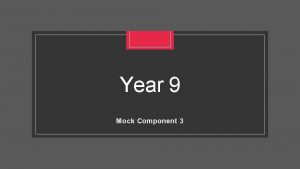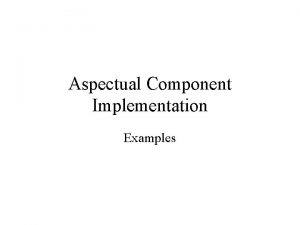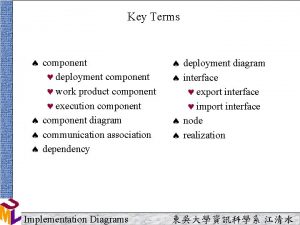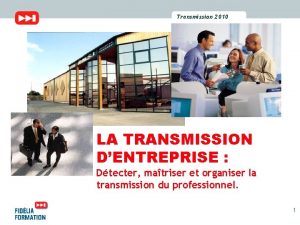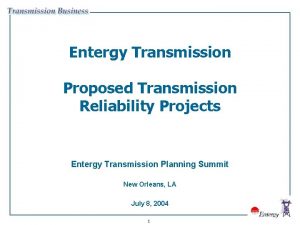Transmission 1 CLUTCH COMPONENT AND OPERATION University Kuala
















































- Slides: 48

Transmission 1 CLUTCH COMPONENT AND OPERATION University Kuala Lumpur Malaysia France Institute Diploma in Automotive Maintenance

Transmission 1 INTRODUCTION • Manual gear box require a clutch to engage or disengage the engine torque • If vehicle had no clutch, engine power will always connected to gear box and engine would dies off every time the vehicle was brought to a stop. • Clutch located between gear box and engine to provides a mechanical coupling • Driver operates the clutch through a linkage that extends from the passenger compartment to the bell housing of the gear box University Kuala Lumpur Malaysia France Institute Diploma in Automotive Maintenance

Transmission 1 Clutch Function 1. Can be disengaged – allow engine cranking and permits engine run freely 2. Allow the driver to shift into various gear as the clutch is disengaged 3. Slip momentarily during engagement – to provides smooth engagement and reduce shocks on power train component 4. Transmit power from engine to transmission / transaxle University Kuala Lumpur Malaysia France Institute Diploma in Automotive Maintenance

Transmission 1 Clutch component and construction Clutch disc Clutch cover clip Clutch release fork flywheel Release bearing Clutch release bearing hub clip University Kuala Lumpur Malaysia France Institute Diploma in Automotive Maintenance

Transmission 1 Clutch component and construction University Kuala Lumpur Malaysia France Institute Diploma in Automotive Maintenance

Transmission 1 Clutch basic construction and operation • Consist of three basic parts – flywheel, friction disc and clutch cover assembly • Flywheel and clutch cover assembly are the driving member and attached to the engine crankshaft • Clutch cover consist of pressure spring and pressure plate and bolted to the flywheel • Spring provide force to hold friction disc against the flywheel during engagement University Kuala Lumpur Malaysia France Institute Diploma in Automotive Maintenance

Transmission 1 Clutch basic construction and operation • During engagement, driven member is squeezed against the two driving members • The driven member connected to the transmission / transaxle input shaft University Kuala Lumpur Malaysia France Institute Diploma in Automotive Maintenance

Transmission 1 Clutch basic construction and operation • As the clutch disengaged, the drive members turn independently and engine power is disconnected from the transmission • When clutch is engaged, the pressure plate moves towards the flywheel and the clutch disc is bound between two revolving drive members and forced to turn at the same speed. University Kuala Lumpur Malaysia France Institute Diploma in Automotive Maintenance

Transmission 1 Clutch basic construction and operation University Kuala Lumpur Malaysia France Institute Diploma in Automotive Maintenance

Transmission 1 Clutch basic construction and operation University Kuala Lumpur Malaysia France Institute Diploma in Automotive Maintenance

Transmission 1 Clutch main component Flywheel • The main driving member of clutch and usually made from nodular cast iron that has high graphite content to lubricate the engagement of the clutch. • Provides some absorption of torsional vibration of crankshaft and inertia to rotate the crankshaft through the four strokes. • Rear surface of flywheel is a friction surface machined very flat to ensure smooth clutch engagement. University Kuala Lumpur Malaysia France Institute Diploma in Automotive Maintenance

Transmission 1 Clutch main component Flywheel Plain bolt holes Threaded bolt holes Pilot bushing Dowel pin Facing for clutch disc University Kuala Lumpur Malaysia France Institute Diploma in Automotive Maintenance

Transmission 1 Clutch main component Flywheel • There two sets of bolt holes drilled into it. The inner set is used to fasten the flywheel to crankshaft, and outer set provides a mounting plate for the pressure plate assembly. • Bore in the center of flywheel and crankshaft holds the pilot bushing, which supports the front end of the transmission input shaft University Kuala Lumpur Malaysia France Institute Diploma in Automotive Maintenance

Transmission 1 Clutch main component Clutch disc • Receives the driving motion from flywheel and pressure plate assembly and transmits the motion to transmission input shaft. • Two types of friction facings. 1. pressure plate loading force without damage 2. cushioning action is needed for clutch engagement. University Kuala Lumpur Malaysia France Institute Diploma in Automotive Maintenance

Transmission 1 Clutch main component Clutch disc • Clutch disc is designed to absorb crankshaft vibration, abrupt clutch engagement and driveline shock. • Material that molded predominantly asbestos. • Particles of cotton, brass, rope, and wire added to prolong the life of the clutch disc and provide torsional strength. or woven into facings was University Kuala Lumpur Malaysia France Institute Diploma in Automotive Maintenance

Transmission 1 Clutch main component Clutch disc University Kuala Lumpur Malaysia France Institute Diploma in Automotive Maintenance

Transmission 1 Clutch main component Clutch disc • facings are riveted to wave springs (cushioning springs) to eliminate chatter when clutch is engaged and reduce clutch disc sticking to flywheel pressure plate surfaces when the clutch is disengaged. • Torsional coil springs allow the disc to rotate slightly in relation to the pressure plate while they absorb the torque forces and stop pins limit this torsional movement to approximately 3/8 inch. University Kuala Lumpur Malaysia France Institute Diploma in Automotive Maintenance

Transmission 1 Clutch main component Pilot bushing • Support the outer end of the transmission's input shaft and splined to clutch disc to transmits power from the engine to the transmission. • Keep the transmission input shaft in position and keep clutch disc in center of flywheel University Kuala Lumpur Malaysia France Institute Diploma in Automotive Maintenance

Transmission 1 Clutch main component Pressure plate assembly • Purpose of the pressure plate assembly 1. squeeze clutch disc onto flywheel with sufficient force to transmit engine torque efficiently. 2. rotating • Two types of pressure plate assemblies – coil springs type and diaphragm spring of the pressure plate assembly University Kuala Lumpur Malaysia France Institute Diploma in Automotive Maintenance

Transmission 1 Clutch main component Pressure plate assembly with coil spring • Uses coil springs and release levers to move pressure plate back and forth. • Springs pressure help to hold pressure plate tightly against the clutch disc and flywheel. University Kuala Lumpur Malaysia France Institute Diploma in Automotive Maintenance

Transmission 1 Clutch main component Pressure plate assembly with coil spring University Kuala Lumpur Malaysia France Institute Diploma in Automotive Maintenance

Transmission 1 Clutch main component Pressure plate assembly with coil spring • Release levers mechanism release holding force of springs. Has two pivot points 1. into the pressure plate 2. cover University Kuala Lumpur Malaysia France Institute Diploma in Automotive Maintenance

Transmission 1 Clutch main component Pressure plate assembly with coil spring University Kuala Lumpur Malaysia France Institute Diploma in Automotive Maintenance

Transmission 1 Clutch main component Pressure plate assembly with coil spring • To disengage the clutch, release bearing pushes the inner ends of the release levers toward the flywheel. • Yokes act as fulcrums for the levers and the outer ends of release levers move backward and pull pressure plate away from clutch disc. • When clutch pedal is released and release bearing move backward, stored energy from the compressed coil springs push the pressure plate and clutch disc against the flywheel with sufficient force to resist slipping. University Kuala Lumpur Malaysia France Institute Diploma in Automotive Maintenance

Transmission 1 Clutch main component Pressure plate assembly with coil spring • Advantages of pressure plate assemblies that use coil springs 1. because of high force exerted by pressure plate springs 2. applications since the coil springs can be changed to increase or decrease pressure plate holding force. University Kuala Lumpur Malaysia France Institute Diploma in Automotive Maintenance

Transmission 1 Clutch main component Pressure plate assembly with diaphragm spring • Use cone-shaped diaphragm spring between pressure plate and pressure plate cover to move the pressure plate back and forth. • Diaphragm spring yields when pressure is applied to it and back to its original shape when pressure is released. • Center portion of diaphragm spring is slit into numerous fingers that act as release levers. University Kuala Lumpur Malaysia France Institute Diploma in Automotive Maintenance

Transmission 1 Clutch main component Pressure plate assembly with diaphragm spring University Kuala Lumpur Malaysia France Institute Diploma in Automotive Maintenance

Transmission 1 Clutch main component Pressure plate assembly with diaphragm spring University Kuala Lumpur Malaysia France Institute Diploma in Automotive Maintenance

Transmission 1 Clutch main component Pressure plate assembly with diaphragm spring • Diaphragm pivots over the pivot ring. The outer rim forces the pressure plate against the clutch disc so clutch is engaged to the flywheel. • As release bearing pushes inner ends (fingers) of diaphragm spring that pivots over the fulcrum ring, its outer rim moves away from flywheel. • The retracting springs pull pressure plate away from the driven disc and disengage the clutch. University Kuala Lumpur Malaysia France Institute Diploma in Automotive Maintenance

Transmission 1 Clutch main component Pressure plate assembly with diaphragm spring • Advantages of pressure plate assemblies that use diaphragm springs 1. 2. 3. 4. 5. 6. Compactness less weight Fewer moving parts to wear out Little pedal effort required from the operator Provide balanced force around the pressure plate because force that holding the clutch does not change throughout its service life. University Kuala Lumpur Malaysia France Institute Diploma in Automotive Maintenance

Transmission 1 Clutch main component Clutch release bearing • Release bearing mounted on an iron casting called a hub, which slides on hollow shaft in front of transmission housing. • Also called throwout bearing, prelubricated ball bearing • Function – to smoothly and quietly move the pressure plate release levers or diaphragm spring through the engagement and disengagement process. usually sealed and University Kuala Lumpur Malaysia France Institute Diploma in Automotive Maintenance

Transmission 1 Clutch main component Clutch release bearing University Kuala Lumpur Malaysia France Institute Diploma in Automotive Maintenance

Transmission 1 Clutch main component Rotating release bearing • Enough tension is applied to clutch control cable to keep a constant light pressure against the release bearing • As a result it kept in contact with the release levers or diaphragm spring of the rotating pressure plate assembly. University Kuala Lumpur Malaysia France Institute Diploma in Automotive Maintenance

Transmission 1 Clutch main component Clutch fork • Forked lever that pivots on a ball located in an opening in the bell housing University Kuala Lumpur Malaysia France Institute Diploma in Automotive Maintenance

Transmission 1 Clutch main component Clutch fork • Forked end slides over the hub of release bearing and small end protrudes from the housing and connects to clutch linkage and clutch pedal • Moves the release bearing and hub back and forth during engagement and disengagement University Kuala Lumpur Malaysia France Institute Diploma in Automotive Maintenance

Transmission 1 Clutch main component Clutch linkages • Series of parts that connects clutch pedal to clutch fork. • Through clutch linkage, operator controls engagement and disengagement of clutch assembly smoothly with little effort • There are two type of clutch linkage 1. mechanical type 2. hydraulic type University Kuala Lumpur Malaysia France Institute Diploma in Automotive Maintenance

Transmission 1 Clutch main component Mechanical clutch linkages • Mechanical clutch linkage can be divided into two types: 1. shaft and lever linkage 2. cable linkage • Shaft and lever clutch linkage consists of various shafts, levers, adjustable rods, and pivots that transmit clutch pedal motion to the clutch fork University Kuala Lumpur Malaysia France Institute Diploma in Automotive Maintenance

Transmission 1 Clutch main component Mechanical clutch linkages University Kuala Lumpur Malaysia France Institute Diploma in Automotive Maintenance

Transmission 1 Clutch main component Mechanical clutch linkages • Cable linkage can perform the same controlling action as shaft and lever linkage but with fewer parts. • This system does not take much space. It has advantage of flexible installation so it can be routed around the power brake and steering units • Upper end is connected to top of clutch pedal arm and lower end is fastened to clutch fork. It designed with a flexible outer housing that is fastened at the fire wall and the clutch housing. University Kuala Lumpur Malaysia France Institute Diploma in Automotive Maintenance

Transmission 1 Clutch main component Mechanical clutch linkages University Kuala Lumpur Malaysia France Institute Diploma in Automotive Maintenance

Transmission 1 Clutch main component Hydraulic clutch linkage • Clutch assembly is controlled by a hydraulic system where hydraulic (liquid) pressure transmits motion from one sealed cylinder to another through a hydraulic line. • Hydraulic pressure that developed by master cylinder reduces pedal effort and provides precise method of controlling clutch operation • Brake fluid commonly used as hydraulic fluid in hydraulic clutch systems University Kuala Lumpur Malaysia France Institute Diploma in Automotive Maintenance

Transmission 1 Clutch main component Hydraulic clutch linkage University Kuala Lumpur Malaysia France Institute Diploma in Automotive Maintenance

Transmission 1 Clutch main component University Kuala Lumpur Malaysia France Institute Diploma in Automotive Maintenance

Transmission 1 Clutch main component Hydraulic clutch linkage • Main component of hydraulic clutch 1. clutch master pump 2. reservoir 3. clutch sleeve cylinder 4. pipe line • Basically the operation are same as hydraulic brake system University Kuala Lumpur Malaysia France Institute Diploma in Automotive Maintenance

Transmission 1 Clutch main component Hydraulic clutch linkage – master pump University Kuala Lumpur Malaysia France Institute Diploma in Automotive Maintenance

Transmission 1 Clutch main component Hydraulic clutch linkage – master pump operation • As pushrod moves, piston and primary cup closed the inlet port to develop hydraulic pressure and transfer the motion to sleeve cylinder • Piston return spring holds the primary cup and piston in the fully released position • Snap ring restricts piston travel. Secondary cup at snap ring end of the piston stops hydraulic fluid from dripping into the passenger compartment University Kuala Lumpur Malaysia France Institute Diploma in Automotive Maintenance

Transmission 1 Clutch main component Hydraulic clutch linkage – sleeve cylinder University Kuala Lumpur Malaysia France Institute Diploma in Automotive Maintenance

Transmission 1 Clutch main component Hydraulic clutch linkage – sleeve cylinder • As the pressure increase inside the system, it caused the piston sleeve move forward and push the clutch fork • When clutch pedal is released all the related spring in the system will forced the pistons and fork return to original position and clutch will engaged • Fluid will return to fluid reservoir University Kuala Lumpur Malaysia France Institute Diploma in Automotive Maintenance
 Sman 2 kuala kapuas
Sman 2 kuala kapuas Peta daerah kuala pilah
Peta daerah kuala pilah Jps kuala kangsar
Jps kuala kangsar Jps wpkl
Jps wpkl Jps wilayah persekutuan
Jps wilayah persekutuan Jps daerah seremban
Jps daerah seremban Peta daerah hulu perak
Peta daerah hulu perak Rancangan tempatan daerah kuala muda 2035
Rancangan tempatan daerah kuala muda 2035 Pengarah bahagian penganjuran pelajaran mara
Pengarah bahagian penganjuran pelajaran mara Senarai sekolah dual language program 2020
Senarai sekolah dual language program 2020 Jabatan pendidikan wilayah persekutuan kuala lumpur
Jabatan pendidikan wilayah persekutuan kuala lumpur Genting sanyen kuala langat power plant
Genting sanyen kuala langat power plant Kuala sungai telor
Kuala sungai telor Fast moving consumer goods
Fast moving consumer goods Jps wilayah persekutuan
Jps wilayah persekutuan Jelaskan peranan kaum muda melalui gerakan islah
Jelaskan peranan kaum muda melalui gerakan islah Peta daerah kuantan
Peta daerah kuantan Sk lata rek
Sk lata rek Sumkuliah
Sumkuliah Peta temerloh
Peta temerloh Jps wpkl
Jps wpkl Peta mukim terengganu
Peta mukim terengganu Mukim triang 1
Mukim triang 1 Sismaps kuala langat
Sismaps kuala langat Jabatan pengairan dan saliran wilayah persekutuan
Jabatan pengairan dan saliran wilayah persekutuan Cleaning tru count air clutches
Cleaning tru count air clutches Introduction of clutch
Introduction of clutch Vstrom 1000 clutch basket
Vstrom 1000 clutch basket![[hydraulic press mesh curtain] [hydraulic press mesh curtain]](data:image/svg+xml,%3Csvg%20xmlns=%22http://www.w3.org/2000/svg%22%20viewBox=%220%200%20200%20200%22%3E%3C/svg%3E) [hydraulic press mesh curtain]
[hydraulic press mesh curtain] Gas turbine clutch
Gas turbine clutch Flat plate clutches
Flat plate clutches 3 types of clutch linkages
3 types of clutch linkages Over center linkage
Over center linkage The commonly used angle between leather or asbestos
The commonly used angle between leather or asbestos Lipe clutch vs eaton
Lipe clutch vs eaton Flat pivot bearing rate of wearing
Flat pivot bearing rate of wearing Flat plate clutch
Flat plate clutch Fieldiq
Fieldiq Cone type limited slip differential
Cone type limited slip differential Msi clutch gm 60
Msi clutch gm 60 Clutch intermediate shaft separation components
Clutch intermediate shaft separation components Fotcc
Fotcc Clutch anatomy
Clutch anatomy A clutch is a device used
A clutch is a device used Fungsi impeller pada torque converter
Fungsi impeller pada torque converter Hydraulic clutch
Hydraulic clutch Slipping clutch tachometer is
Slipping clutch tachometer is Clutch exercise
Clutch exercise Stall torque
Stall torque







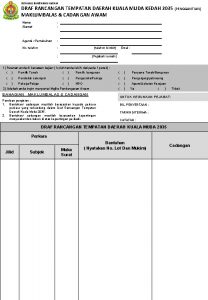
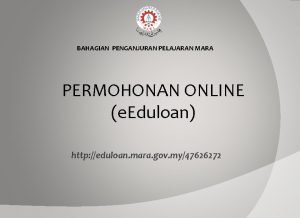

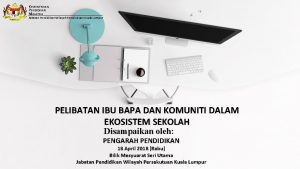

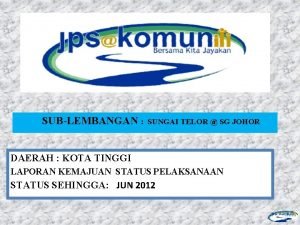


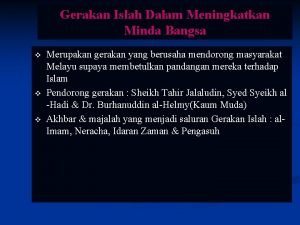

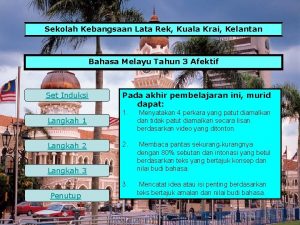

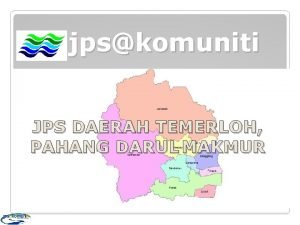
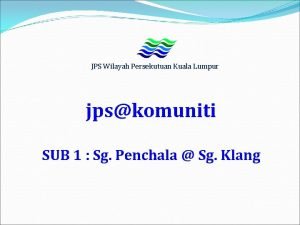

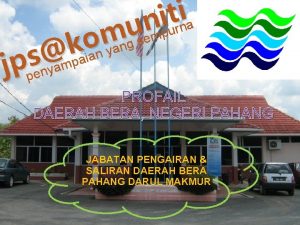

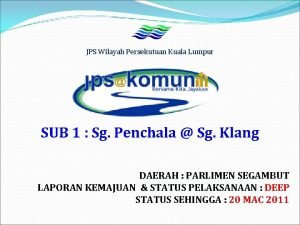
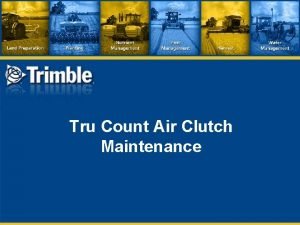
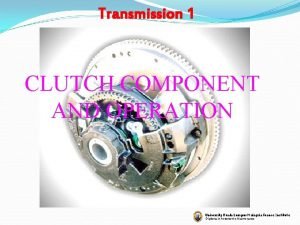
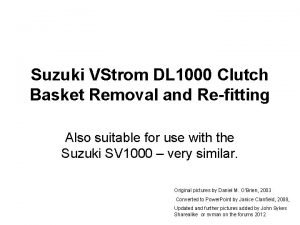
![[hydraulic press mesh curtain] [hydraulic press mesh curtain]](https://slidetodoc.com/wp-content/uploads/2020/09/631491_97883c2217697d92e178631085351e39-300x225.jpg)
